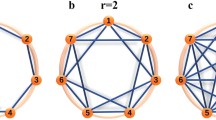Abstract
A wide range of ecological and evolutionary models predict variety in phenotype or behavior when a population is at equilibrium. This heterogeneity can be realized in different ways. For example, it can be realized through a complex population of individuals exhibiting different simple behaviors, or through a simple population of individuals exhibiting complex, varying behaviors. In some theoretical frameworks these different realizations are treated as equivalent, but natural selection distinguishes between these two alternatives in subtle ways. By investigating an increasingly complex series of models, from a simple fluctuating selection model up to a finite population hawk/dove game, we explore the selective pressures which discriminate between pure strategists, mixed at the population level, and individual mixed strategists. Our analysis reveals some important limitations to the “ESS” framework often employed to investigate the evolution of complex behavior.
Similar content being viewed by others
References
Clark, A.B.: 1978, 'Sex Ratio and Local Resource Competition in a Prosimian Primate', Science 201, 163–165.
Cooper, W.S. and Kaplan, R.H.: 1982, 'Adaptive “Coin-Flipping” a Decision-theoretic Examination of Natural Selection for Random Individual Variation', Journal of Theoretical Biology 94, 135–151.
Dempster, E.R.: 1955, 'Maintenance of genetic hetergeneity', Cold Spring Harbor Symposium on Quantitative Biology 20, 25–32.
Gillespie, J.: 1973, 'Polymorphism in random environments', Theoretical Population Biology 4, 193–195.
Gillespie, J.H.: 1991, The Causes of Molecular Evolution, Oxford Series in Ecology and Evolution. Oxford University Press, New York.
Godfray, H.C.J. and Parker, G.A.: 1992, 'Sibling competition, parent-offspring conflict, and clutch size', Animal Behaviour 43, 473–490.
Godfrey-Smith, P.: 1996, Complexity and the Function of Mind in Nature, Cambridge University Press, Cambridge.
Haldane, J.B.S. and Jayakar, S.D.: 1963, 'Polymorphism due to selection of varying direction', Journal of Genetics 58, 237–242.
Hartl, D.L. and Cook, R.D.: 1973, 'Balanced polymorphisms of quasineutral alleles', Theoretical Population Biology 4, 163–172.
Hines, W.G.S.: 1980, 'Strategy stability in complex populations', Journal of Applied Probability 17, 600–610.
Hines, W.G.S.: 1987, 'Evolutionary Stable Strategies: A Review of Basic Theory', Theoretical Population Biology 31, 195–272.
Hines, W.G.S. and Anfossi, D.: 1990, 'A discussion of evolutionarily stable strategies', in S. Lessard (ed.), Mathematical and Statistical Developments of Evolutionary Theory, Kluwer Academic Publishers, Dordrecht, pp. 229–267.
Karlin, S. and Lieberman, U.: 1974, 'Random temporal variation in selection intensities: case of large population size', Theoretical Population Biology 6, 355–382.
Levins, R.: 1968, Evolution in Changing Environments, Princeton University Press, Princeton.
Maynard Smith, J.: 1982, Evolution and the Theory of Games, Cambridge University Press, Cambridge.
Maynard Smith, J.: 1988, 'Can a mixed strategy be stable in a finite population?', Journal of Theoretical Biology 130, 247–251.
Maynard Smith, J. and Price, G.R.: 1973, 'The logic of animal conflict', Nature 246, 15–18.
Orzack, S.H. and Sober, E.: 1994, 'Optimality models and the test of adaptationism', American Naturalist 143(3), 361–380.
Riley, J.G.: 1979, 'Evolutionary equilibrium strategies', Journal of Theoretical Biology 76, 109–123.
Schaffer, M.E.: 1988, 'Evolutionarily Stable Strategies for a Finite Population and a Variable Contest Size', Journal of Theoretical Biology 132, 469–478.
Seger J. and Brockmann, J.: 1987, 'What is bet-hedging?', Oxford Surveys in Evolutionary Biology 4, 182–211.
Sober, E.: 1993, Philosophy of Biology, Dimensions of Philosophy Series. Westview Press, Boulder.
Thomas, B.: 1984, 'Evolutionary Stability: States and Strategies', Theoretical Population Biology 26, 49–67.
Verner, J.: 1965, 'Selection for sex ratio', American Naturalist 94, 419.
Vickery, W.L.: 1988, 'Reply to Maynard Smith', Journal of Theoretical Biology 132, 375–378.
Wilson, D.S. and Yoshimura, J.: 1994, 'On the coexistence of specialists and generalists', American Naturalist 144(4), 692–707.
Author information
Authors and Affiliations
Rights and permissions
About this article
Cite this article
Bergstrom, C.T., Godfrey-Smith, P. On the Evolution of Behavioral Heterogeneity in Individuals and Populations. Biology & Philosophy 13, 205–231 (1998). https://doi.org/10.1023/A:1006588918909
Issue Date:
DOI: https://doi.org/10.1023/A:1006588918909




